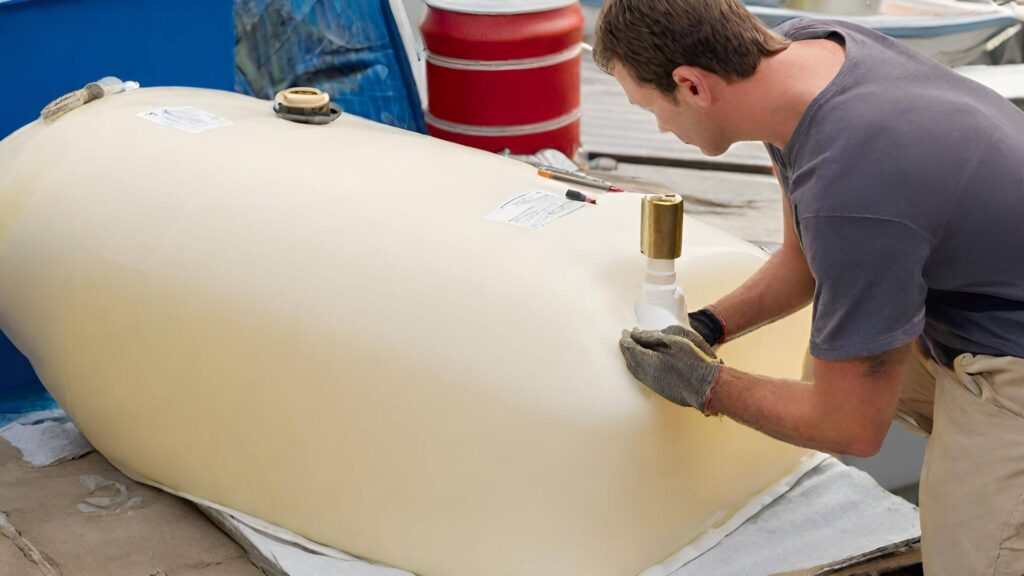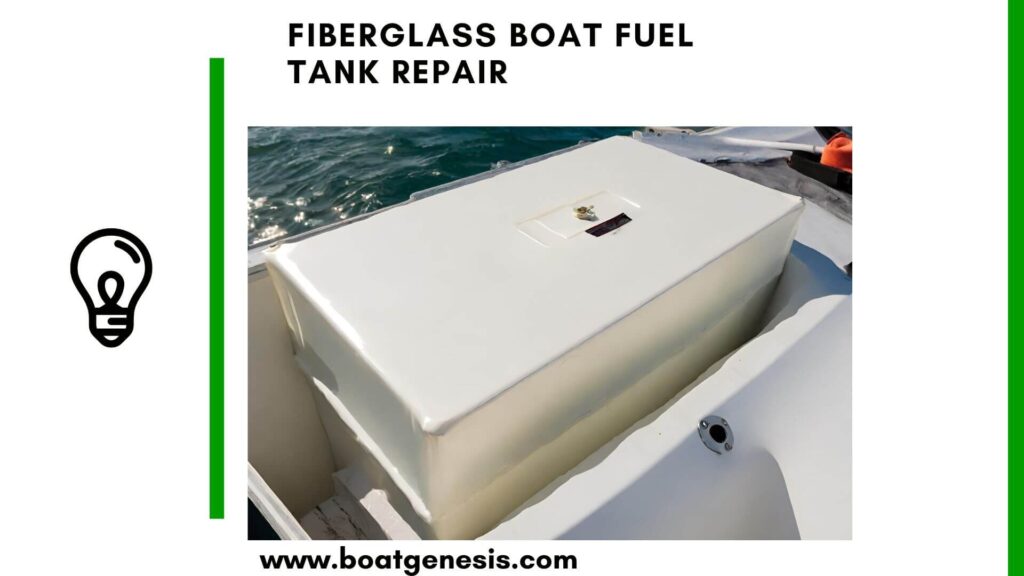Has your boat’s fuel tank seen better days? Cracks, leaks, and deterioration can spell trouble for your marine vessel. Thankfully, fiberglass fuel tanks can often be repaired instead of completely replaced. This preserves time and money while keeping your boat seaworthy.
In this article, we’ll explore common fuel tank issues in recreational boats and viable repair solutions.
Read on to learn the fundamentals of patching fractures, sealing leaks, and maintaining your tank’s integrity.
Pinpointing Problem Areas

Fiberglass fuel tanks degrade over years of exposure to gasoline, weather elements, and normal wear and tear. Some common problem areas include:
- Cracks alongside seams or corners
- Punctures from impact or abrasion
- Leaks around fuel line connections
- Blisters on the gelcoat surface
Catching issues early is key to simpler repairs. Inspect your fuel tank periodically to spot any flaws in the armor. Consider replacing deteriorated fuel lines and fittings as well while the tank is empty.
Fiberglass Fuel Tank Repair Process
Minor fuel tank repairs are possible with the right materials and techniques. Epoxy resin products formulated for marine use are indispensable. Carefully follow each product’s instructions for optimal results.
Here are some common fiberglass fuel tank repairs:
1. Sealing Cracks and Holes
One repair that can often be done is sealing small cracks or puncture holes.
This starts by thoroughly cleaning and sanding the area to create a rough surface for the epoxy resin to adhere to. A thinning agent is then used to allow the epoxy to deeply penetrate the crack or hole.
Multiple thin coats are applied, allowing each to fully cure before adding more.
Once the crack or hole is filled and cured, fiberglass cloth or mat is layered on top and additional resin is used to saturate it. This adds strength and reinforcement.
More layers may be added if needed, continuing to allow full curing between applications.
The final layer is sanded smooth once hardened.
2. Building Up Blisters
If there are blisters in the gelcoat surface of the tank, these can be repaired by injecting epoxy resin into the void to fill it up.
After curing, the surface is sanded down to remove the blister. Epoxy and fiberglass cloth are then layered on to build the area back up to the original thickness.
Resin is used to fully saturate each layer as it’s applied. Enough layers are added to match the surrounding thickness.
The final cured repair is then sanded flush and smooth with the rest of the tank surface.
3. Sanding/Repainting Scratches
For surface-level cracks or scratches that don’t penetrate deeper, an easier repair is possible.
The flaw can be sanded and buffed to create a clean surface.
For scratches, sanding is done to create a slight taper into the gelcoat.
After cleaning up the dust, new paint color-matched to the existing tank is brushed or sprayed on.
Multiple thin coats allow the paint to cure fully between applications. The final coat is allowed to harden completely before wet sanding and buffing out any imperfections. This yields a uniform appearance.
Replacing Fittings and Fuel Lines
Over time, the fittings and fuel lines that connect to the tank can become corroded or cracked, causing leaks.
These connections are under constant stress from engine vibration, flexing lines, and exposure to weather.
Replacing these components can restore full integrity. This starts with draining all fuel and disconnecting old fittings and fuel lines. The tank surfaces are cleaned and sanded around the fitting areas to create a fresh bonding surface.
New marine-grade fuel fill fittings, vents, fuel pump pickups, and fuel lines are installed using epoxy for a solid seal around openings.
Stainless steel fittings avoid further corrosion. Fuel lines are also replaced with new marine-rated fuel hoses.
Properly sealing new fittings and lines prevents further leakage while refreshing the system with durable components.
- Seal cracks and holes by saturating areas with thinned resin. Apply a layered fiberglass mat once the leak is filled.
- Build up blisters and delaminations with resin, allowing layers to fully cure.
- Sand and buff out cracks or abrasions in the gelcoat, then apply color-matched paint.
- Replace leaky fittings and fuel lines with new marine-grade components.
Seeking Professional Help
While minor fixes are often DIY-friendly, certain fuel tank issues call for a marine technician’s expertise. Severe cracks, major impact damage, and pervasive blistering warrant a pro’s touch.
Professionals have the tools, materials, and know-how to properly evaluate and repair tanks. This includes compliance with safety issues like fume control. They can also determine if total replacement is the only viable option.
When To Replace A Fiberglass Fuel Tank

While many fiberglass gas tank issues can be repaired, there comes a point when replacing the entire tank is needed to keep it seaworthy. Some reasons for total fuel tank replacement may include:
- Cracks or holes too large to properly seal
- Severe corrosion and degradation to large portions of the tank
- Warping or major deformation causing poor fuel system function
- Unrepairable blistering covering over 30% of the tank’s surface area
Replacing a fiberglass boat’s gas tank is best left to experienced marine technicians. It’s crucial to follow safety protocols like inerting tanks before removal to prevent explosive fumes.
Professionals have the equipment to properly extract an old tank without further boat damage, contain hazardous vapors, and install a new tank with reliable fittings that won’t leak.
The new replacement tank must match the capacity and dimensions of the original to properly fit the allotted space.
Fuel fill arrangement and hose connections must align with existing hardware. Seek fuel tanks designed specifically for marine use, with anti-corrosive treatments suited for ethanol gasoline and saltwater environments.
A professional technician can ensure optimal selection and hassle-free installation.
While repairs can go a long way, don’t hesitate to replace a badly corroded or malfunctioning fuel tank. Investing in a new trusty tank gives peace of mind out on open waters for seasons to come.
With some care and maintenance, your new fiberglass fuel tank should last for many more years before replacements come into question again.
Final Thoughts
By regularly checking for problems and addressing them early, you can keep your boat’s fiberglass fuel tank shipshape.
Schedule professional inspections to catch deterioration before it becomes dire. Your vessel’s performance relies on an integrity-preserving fuel system.
You have more questions about your fiberglass fuel tank repair process? Leave a comment below and I will get back to you.


